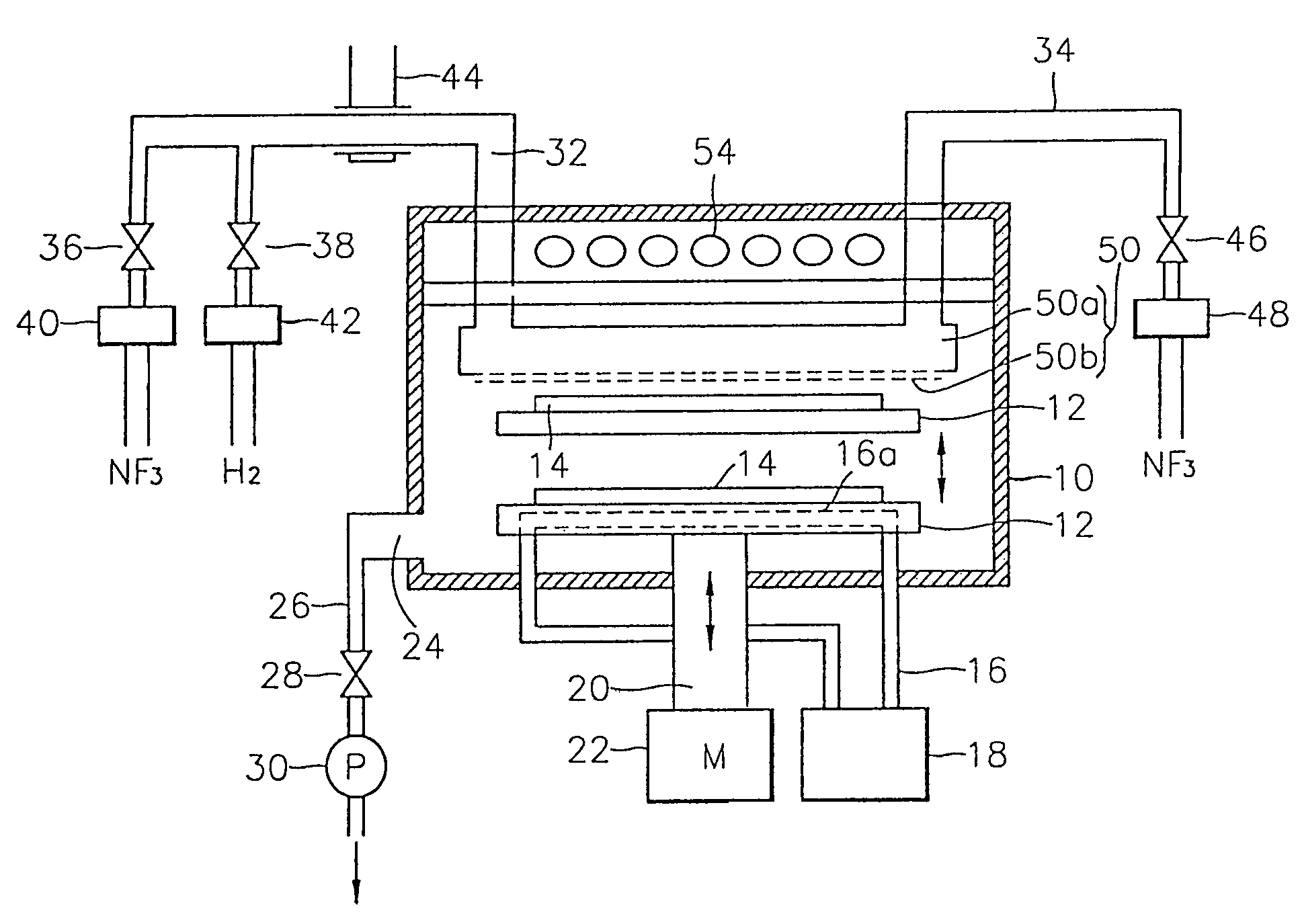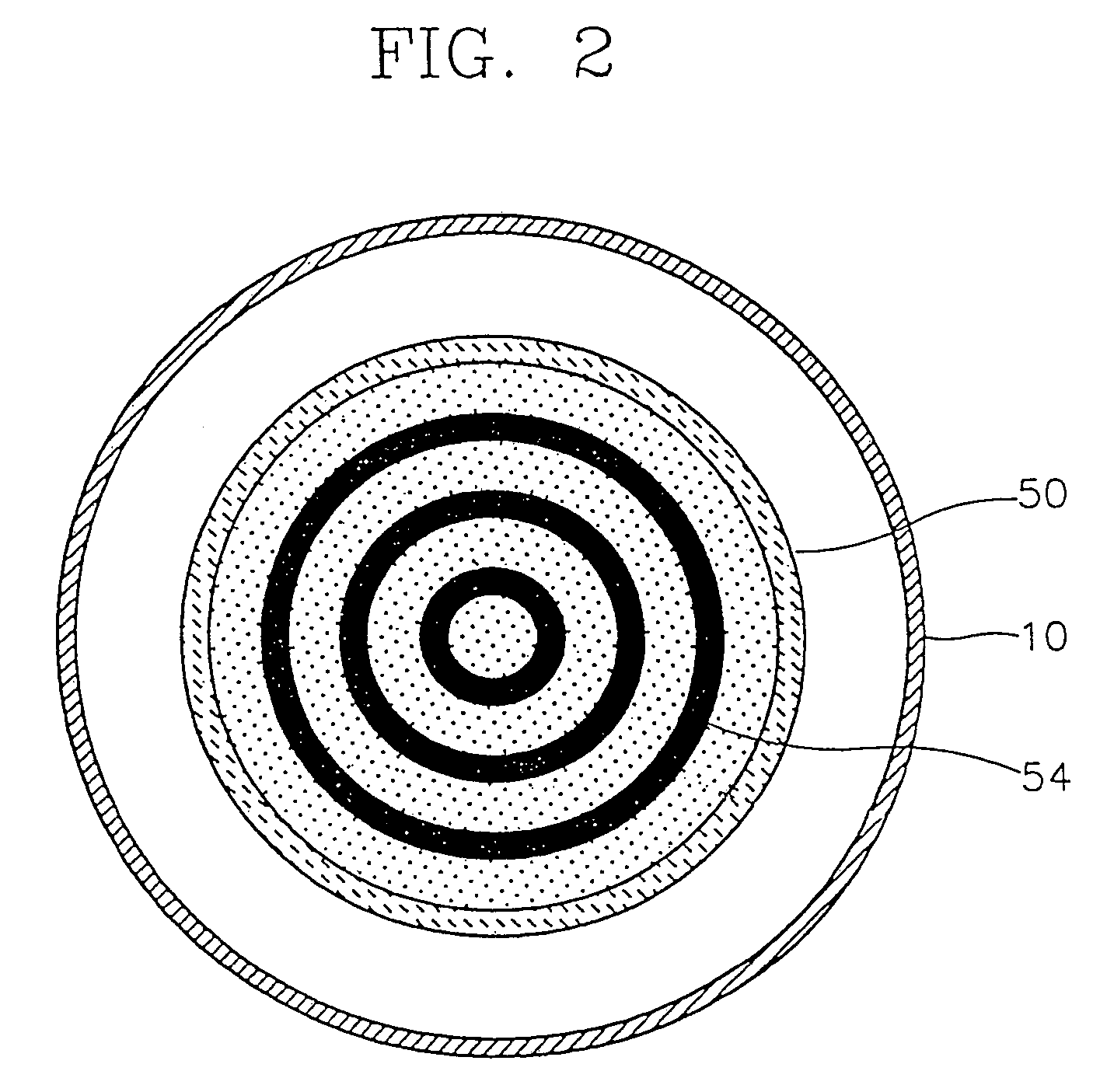Method of removing oxide layer and semiconductor manufacturing apparatus for removing oxide layer
a technology of oxide layer and manufacturing apparatus, which is applied in the direction of electrical apparatus, decorative surface effects, decorative arts, etc., can solve the problems of deteriorating the characteristics of a semiconductor device, affecting the quality of semiconductor devices, etc., to achieve high selectivity
- Summary
- Abstract
- Description
- Claims
- Application Information
AI Technical Summary
Benefits of technology
Problems solved by technology
Method used
Image
Examples
first embodiment
of Semiconductor Manufacturing Apparatus
[0048](Apparatus I)
[0049]Referring to FIG. 1, an example of a semiconductor manufacturing apparatus which uses the embodiment of the oxide layer removing method according to the present invention is shown. The semiconductor manufacturing apparatus of FIG. 1 includes a vacuum chamber 10 which provides a vacuum condition, a plasma generating device 44 for producing plasma from reaction gases, a gas diffuser 50, a heater 54 installed to allow a continuous annealing process in the same chamber, a susceptor driving unit, which includes a susceptor 12, a shaft 20 and a motor M (22), for adjusting the location of a silicon wafer 14 in the vacuum chamber 10.
[0050]In particular, the susceptor 12, on which the silicon wafer 14 having an oxide layer to be etched is mounted, is installed in a lower central portion of the vacuum chamber 10. The susceptor 12, supported by the vertically movable shaft 20, moves upward and downward in the direction indicated ...
PUM
| Property | Measurement | Unit |
|---|---|---|
| pressure | aaaaa | aaaaa |
| temperature | aaaaa | aaaaa |
| volume | aaaaa | aaaaa |
Abstract
Description
Claims
Application Information
 Login to View More
Login to View More - R&D
- Intellectual Property
- Life Sciences
- Materials
- Tech Scout
- Unparalleled Data Quality
- Higher Quality Content
- 60% Fewer Hallucinations
Browse by: Latest US Patents, China's latest patents, Technical Efficacy Thesaurus, Application Domain, Technology Topic, Popular Technical Reports.
© 2025 PatSnap. All rights reserved.Legal|Privacy policy|Modern Slavery Act Transparency Statement|Sitemap|About US| Contact US: help@patsnap.com



